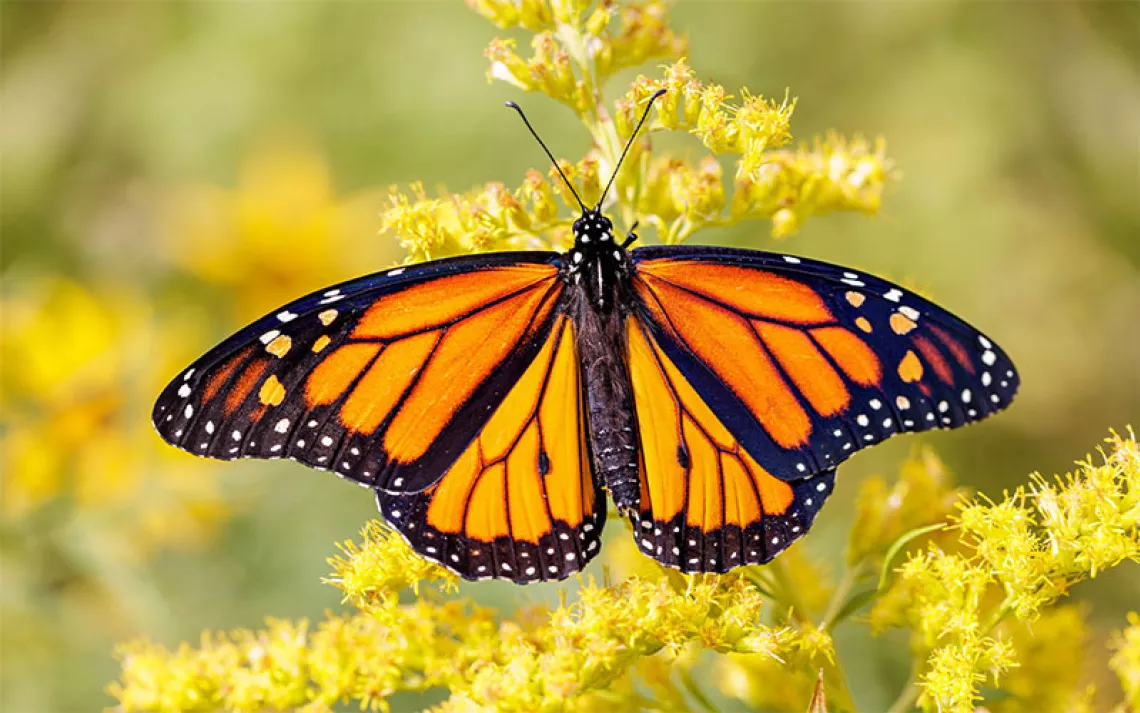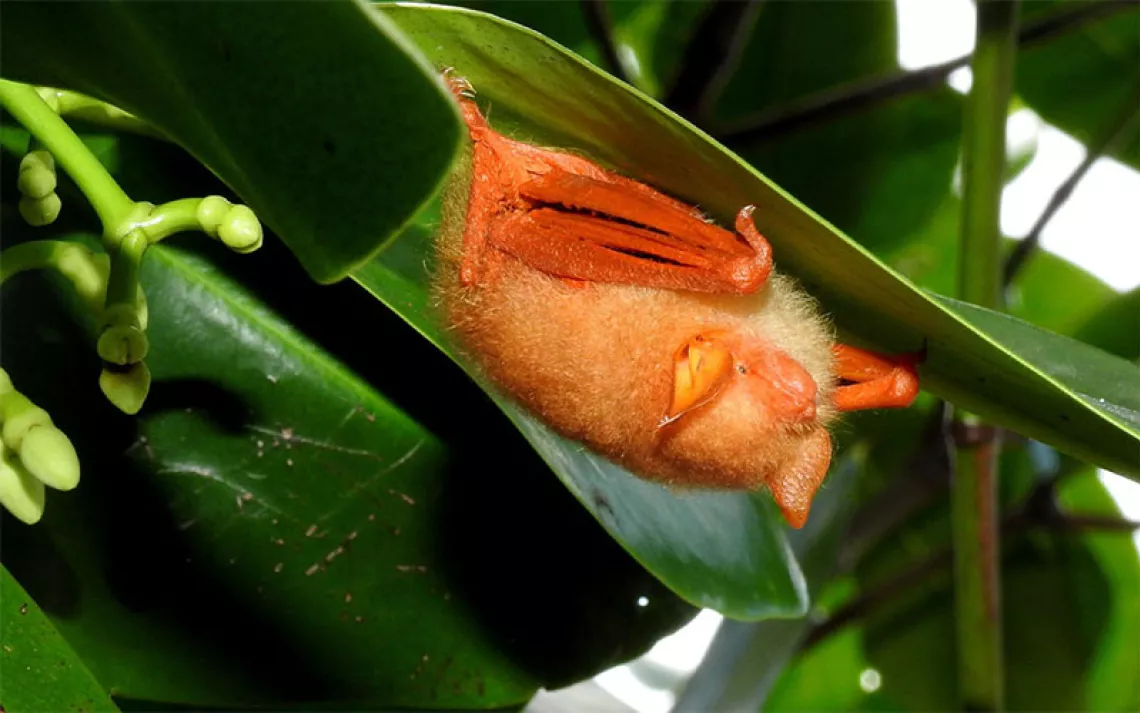Condor CSI
When a condor dies in California, Tabitha Viner pulls on her necropsy gloves and gets to work

Tabitha Viner documents everything about a poisoned condor, including the state of its organs. | Photo by USFWS Necropsy Center/Juliet Grable
Apart from the drone of the HVAC, the necropsy room at the Clark R. Bavin National Fish and Wildlife Forensics Laboratory in Ashland, Oregon, was empty and quiet. At one of the three stations, an assortment of instruments was spread neatly on a spotless stainless steel table. Wearing an apron over a colorful blouse, Tabitha Viner entered the room carrying a large bundle wrapped in a translucent green plastic bag. A stale odor of decay trailed after her.
She deposited her package on the steel table. "Condors always smell the same way," Viner said. She was preparing to perform a necropsy—an animal autopsy—on a wild California condor that had died from suspected lead poisoning. This facility is the only full-service wildlife-focused crime lab in the United States, and Viner and her colleague, Rebecca Kagan, are the only full-time wildlife forensic pathologists in the country.
The giant scavengers are vulnerable to the effects of lead poisoning, which accounts for half of all wild condor deaths.
I've watched condors for years on video and webcams, but this was the first one I had seen in the flesh. It was huge, and perfectly intact. The condor's brown-black primary feathers were longer than my forearm. Its head was bright mustard yellow. Smaller feathers billowed around its neck like a boa.
Condor #818 was a six-year-old male from the central California flock, which numbers around 92 free-flying birds. After a Bakersfield resident spotted the condor acting lethargic, US Fish and Wildlife personnel took it to the Los Angeles Zoo. The bird died the next day.
Before the necropsy, Viner had showed me X-rays of the condor's body. "See this area around the wings?" she said, pointing to the shoulder area. "The muscles should be a lot fuller there." Muscle wasting is a sign of lead poisoning. Viner also pointed out the heart area, which she thought looked "narrow," as well as some irregular bright spots in the gizzard that could be metal fragments.
In the necropsy room, she arranged the condor on its back on two large plastic cutting boards. The first step, she explained, was "to separate the insides from the outsides." She sprayed down the feathers on either side of the breastbone, exposing the skin, then used a scalpel to cut from neck to vent. She pulled the skin away from the carcass, exposing bright pink-red muscle. There was a foul, sour odor.
Viner pointed to the lower part of the body cavity, where dark-green sludge had seeped into the surrounding tissues, staining organs and feathers near the bird's vent. "Bile imbibition," she said. Lead poisoning slows and even arrests digestion because bile can't perform its normal function.
Since 2013, every condor that has died in the wild has come to this lab. The giant scavengers are particularly vulnerable to the effects of lead poisoning, which accounts for half of all wild condor deaths.
"We can train condors to avoid power poles so they don't get electrocuted, but we can't train them to not eat their normal diet," Viner said. (That's why conservation groups supply wild condors with uncontaminated carcasses.)
Viner methodically nicked at the viscera, pulling the feathered skin away from the carcass until she was able to flip the condor over and remove the final connections at its back. Then she pulled away the hide and spread it like a cloak on the floor, wings open to the sky, so she could take photos.
Viner has been a wildlife forensic scientist at the lab since 2010. Before that, she was a diagnostic pathologist at the National Zoo in Washington, DC. "I like the Sherlock Holmes aspect of the job, and I enjoy working with the agents to investigate a case," she said. "They can give us good information that can help us understand what the animal on our table is telling us." The lab regularly receives creatures protected by the Migratory Bird Treaty Act, the Endangered Species Act, and the Convention on International Trade in Endangered Species. Viner sees a lot of birds, particularly bald and golden eagles, but she has also worked on gray wolves, otters, and the occasional Florida panther.
Her next task was to remove and separate all the organs. The spleen—a brown-red bean—went first. Heart, lungs, liver, and testes followed. She snipped samples from each. The intestines took some patience. She carefully untangled them, like a knitter working a ball of yarn. Viner narrated everything she was seeing; the voice-recognition software recording her observations would be used for her final report.
Viner opened up the crop—the alimentary pouch in which birds store food prior to digestion—to reveal a clump of partially digested meat and a short length of intestine.
"Condors, especially baby condors, will eat anything," she said, plucking out a large piece of hard plastic. "Parents tend to bring condor chicks all kinds of crazy stuff—bottle caps, pieces of wiper blades, lost sunglasses . . ."
Next came the gizzard, or ventriculus, which contained a dark-green wad that looked like cooked spinach. Viner prodded it apart and tweezed out several shiny specks. She cleaned them and put them under a microscope. Several were tiny pebbles, but one was a curl of copper—part of a bullet casing. While the fragment might help tell the story of the condor's death, it wasn't large enough to identify the bullet type.
The use of lead ammunition for hunting has been illegal in California since July 2019, but enforcing the law is difficult. Groups like the Peregrine Fund and Ventana Wildlife Society are helping hunters and ranchers switch to lead-free copper ammunition, but it can be hard to find, especially in certain calibers. Plus lead ammunition remains legal for non-hunting purposes in California, and for all purposes in adjacent states.
Days later, lab tests revealed the lead concentration in the condor's liver: 245 parts per million. Viner called it a "whomping" level. "Anything over 20 ppm indicates toxicity."
 The Magazine of The Sierra Club
The Magazine of The Sierra Club



